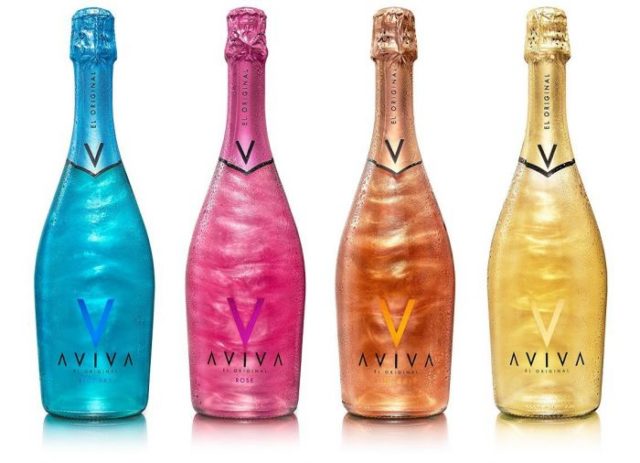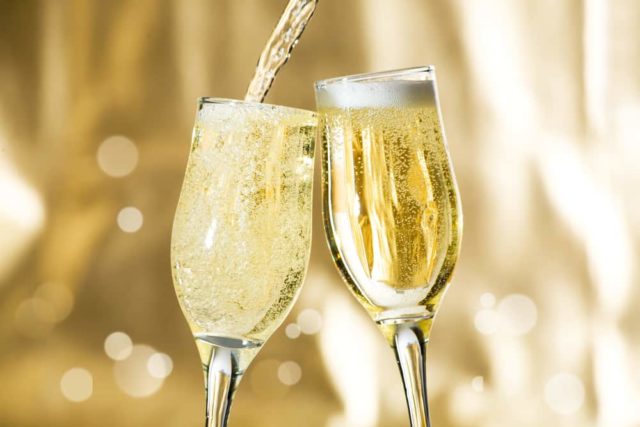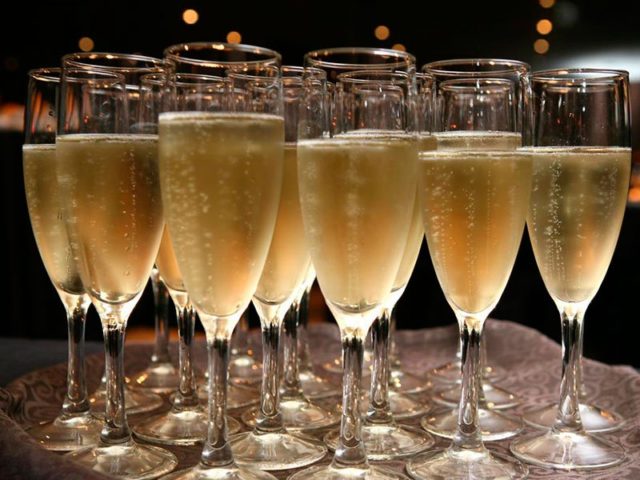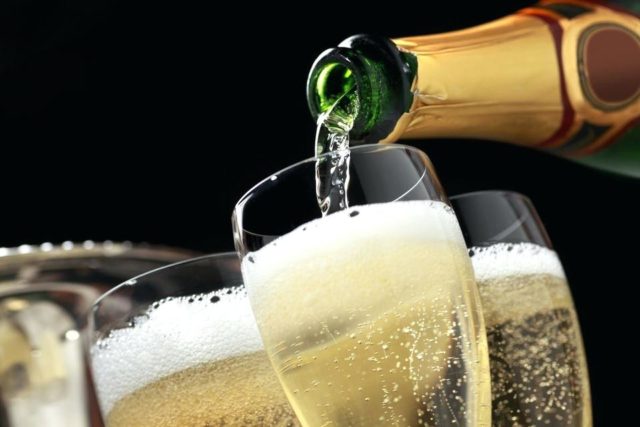Content
The benefits and harms of champagne are an interesting question for sparkling wine lovers. The alcoholic drink does have valuable properties, but this does not at all make it safe.
Chemical composition of champagne
Champagne is a type of wine made from special grape varieties. The peculiarity of the drink is that special yeasts are added to it, which are responsible for proper fermentation and characteristic gases in the finished product.
The composition of high-quality champagne contains some useful substances, namely:
- magnesium and potassium;
- sodium;
- B vitamins;
- polyphenols and alkalis;
- antioxidants;
- carbohydrates - up to 5 g per 100 ml of product;
- proteins - about 0.2 g;
- sugar - up to 1.5 g

The calorie content of the drink is about 88 kcal per 100 ml, and the strength is only 8-13 degrees.
Why is champagne useful?
In small quantities, quality champagne can have a beneficial effect on the body:
- stimulates the respiratory system;
- improves intestinal motility and peristalsis;
- promotes the production of hydrochloric acid in the stomach and helps with sluggish digestion;
- normalizes biliary processes;
- has a slight anti-aging effect;
- activates the immune system and protects against infections;
- lowers blood pressure;
- improves blood flow to the brain.
It should also be noted the tonic effect of the drink, a glass of champagne cheers up and helps relieve stress.

Why is champagne harmful?
Any beneficial properties of alcohol remain very insignificant against the background of its potential harm:
- Champagne belongs to the category of low alcohol drinks. Because of this, people often relax when using it and do not consider it necessary to stop in time. You can get drunk from excessive use of champagne quickly and very strongly, from this point of view, the drink is even more dangerous than strong alcohol.
- Overuse of champagne leads to toxic damage to the body. After heavy libations, the liver and excretory system suffer, headaches and vestibular disturbances, flatulence and indigestion appear.
- If in small quantities "weak" alcohol raises the mood, in large quantities it causes apathy, depression and increased irritability.
Festive sparkling champagne is harmful in that it can cause severe physical and psychological dependence on alcohol. Drinking sparkling wine too often can make it harder to give up over time. It can take a lot of time to realize the problem. Often, it is people who use weak alcohol who refuse to consider themselves addicted and do not notice negative changes in their own behavior.
Why is champagne harmful for a woman
Sparkling wine is especially harmful to the female body. First of all, women are much easier than men to become addicted to alcohol, their body is less likely to recover from libations and does not have high resistance. Therefore, champagne for women can quickly turn into a problem that affects all areas of life.

Champagne in large quantities is harmful to female beauty. Like any alcohol, it causes dehydration and at the same time provokes edema, slows down the processes of cell renewal. Against the background of frequent consumption of the drink, a woman's face becomes loose and puffy, bags under the eyes and early wrinkles appear. The figure loses its slenderness, the drink contributes to gaining excess weight.
Sparkling wine harms a woman's reproductive system. Drinking abuse can lead to disruptions in the monthly cycle and even infertility.
Why is champagne harmful for men
Representatives of the sterner sex often take sparkling wine lightly and do not see it as a threat to health. However, in large quantities, champagne can damage the male body as well.
The abuse of champagne has a negative impact on the reproductive sphere in men. Potency suffers and libido decreases, the quality of seminal fluid deteriorates, which means that the risk of conceiving a child with congenital developmental disabilities increases.
Large doses of champagne have a bad effect on the cardiovascular system and can provoke early strokes and heart attacks. Champagne is harmful to the liver and the entire digestive system; with alcohol abuse, men can face not only ulcers and gastritis, but also cirrhosis. Constant libations impair memory in men, reduce concentration and intelligence.

Contraindications to champagne
A low-alcohol drink, one way or another, harms any person. But in some conditions, it is necessary to completely abandon the use of sparkling wine. Contraindications include:
- peptic ulcer and gastritis;
- intestinal colitis and pancreatitis;
- hemorrhoids;
- heart disease;
- cirrhosis or liver fibrosis;
- cholecystitis;
- increased gas formation;
- pregnancy and lactation in women.
You can not drink champagne with an unstable emotional state and during a period of depression. A laughing drink can backfire and lead to increased aggression or apathy.
Rules for drinking champagne
The harm from drinking sparkling wine can be reduced by following simple rules:
- Champagne should not be consumed on a daily basis. It is permissible to drink 2 glasses of the drink twice a week, but it is advisable to avoid even such dosages.
- If several glasses of champagne were drunk within one week, then for the next 3 months it is better to completely abandon any alcohol. This will allow the body to get rid of all the breakdown products of alcohol.
- Champagne must be eaten so as not to harm the digestion. Usually, sparkling wine is consumed with desserts - chocolate, pineapple, strawberries with cream. White meat and seafood, cheese dishes and vegetable salads are well suited as an appetizer.

During the feast, it is strictly not recommended to mix different alcoholic beverages. Pearlescent champagne and regular sparkling wine are especially harmful when combined with red species or beer. Such a feast can end with a headache, nausea, or a sudden surge in pressure.
Conclusion
The benefits and harms of champagne are unequal - an alcoholic drink damages health even in small dosages. But if you drink sparkling wine in small quantities and rarely, then serious harm can be avoided.

